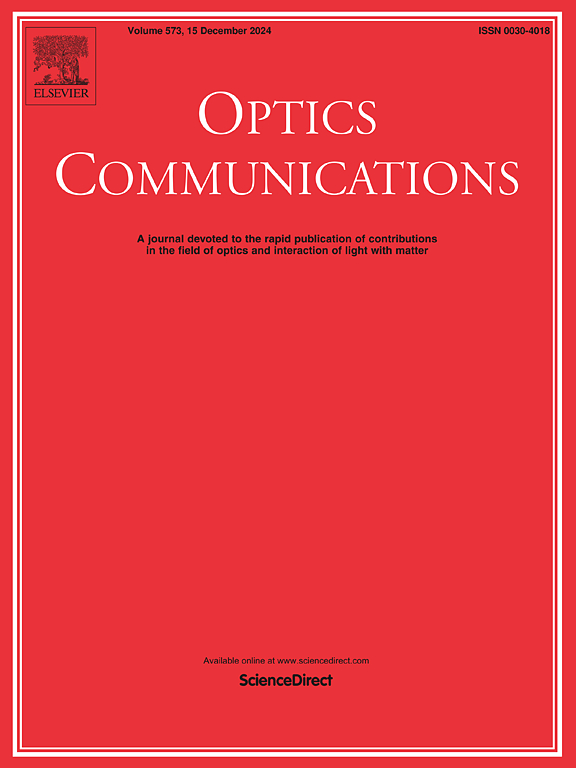基于关键点的车载光学摄像机通信ROI检测
IF 2.5
3区 物理与天体物理
Q2 OPTICS
引用次数: 0
摘要
用于车联网(V2X)场景的光学摄像头通信(OCC)已成为智能交通系统(ITS)的关键技术途径。然而,在复杂的室外环境中,背景噪声与通信信号之间的耦合干扰严重影响了OCC系统的鲁棒性,需要精确的感兴趣区域(ROI)检测算法进行光源定位,以保证信息的可靠传输。针对这一问题,本研究提出了基于关键点的ROI (KP-ROI)检测模型,并建立了V2X通信性能的系统评价框架。该框架结合OCC系统架构,定义检测率(αd)和精度率(αp),分析ROI对通信质量的影响机制,并采用欠采样差分相移开关键控(udpook)调制进行实验验证。实验结果表明,在受控静态场景下,该算法可以在15 m的通信距离内稳定传输车辆通信数据,平均误码率(BER)为0.5%,并支持±30°的角偏转。在动态情况下,在直线等速行驶时,BER可以稳定在5%以下。本研究验证了ROI检测鲁棒性与通信效率之间的强相关性,同时也展示了关键点算法在光源定位任务中的优势。本文章由计算机程序翻译,如有差异,请以英文原文为准。

Keypoint-based ROI detection for vehicular optical camera communication
Optical camera communication (OCC) for vehicle-to-everything (V2X) scenarios has emerged as a critical technical pathway in intelligent transportation systems (ITS). However, the coupled interference between background noise and communication signals in complex outdoor environments severely compromises the OCC system’s robustness, necessitating precise region-of-interest (ROI) detection algorithms for light source localization to ensure reliable information transmission. To solve this problem, this study proposes a keypoint-based ROI (KP-ROI) detection model and establishes a systematic evaluation framework for V2X communication performance. Integrated with OCC system architecture, this framework defines the detection rate () and precision rate () to analyze ROI’s impact mechanisms on communication quality while employing Undersampled Differential Phase Shift On-Off Keying (UDPSOOK) modulation for experimental validation. The experimental results show that in controlled static scenarios, the proposed algorithm can stably transmit vehicle communication data at a communication distance of 15 m with an average bit error rate (BER) of 0.5%, and supports an angular deflection of ±30°. In dynamic scenarios, during straight-line constant-speed driving, the BER can remain stable below 5%. This study verifies the strong correlation between ROI detection robustness and communication efficiency, while demonstrating the advantages of the keypoint algorithm in light source localization tasks.
求助全文
通过发布文献求助,成功后即可免费获取论文全文。
去求助
来源期刊

Optics Communications
物理-光学
CiteScore
5.10
自引率
8.30%
发文量
681
审稿时长
38 days
期刊介绍:
Optics Communications invites original and timely contributions containing new results in various fields of optics and photonics. The journal considers theoretical and experimental research in areas ranging from the fundamental properties of light to technological applications. Topics covered include classical and quantum optics, optical physics and light-matter interactions, lasers, imaging, guided-wave optics and optical information processing. Manuscripts should offer clear evidence of novelty and significance. Papers concentrating on mathematical and computational issues, with limited connection to optics, are not suitable for publication in the Journal. Similarly, small technical advances, or papers concerned only with engineering applications or issues of materials science fall outside the journal scope.
 求助内容:
求助内容: 应助结果提醒方式:
应助结果提醒方式:


